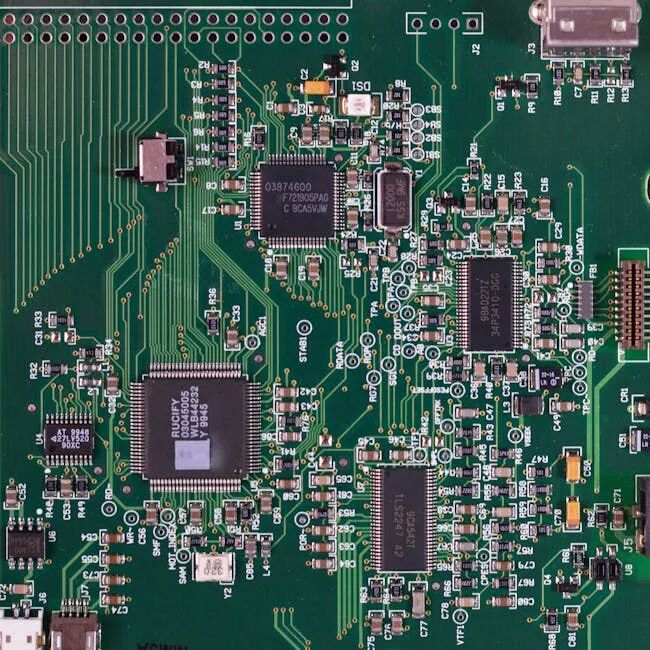When beverage companies start manufacturing chips, is it a trend or a trap?
In the past two years, the semiconductor industry has become a “hot cake” in the capital market, with even beverage and snack companies starting to invest heavily in chip manufacturing. At first glance, this seems like a “fantastical tale,” but a closer look at financial reports reveals that a certain milk tea brand announced a $1 billion investment to build a semiconductor packaging plant, and a snack giant invested in an AI chip company—what lies behind these news stories? Is it the ambition of corporate strategic upgrades or a dangerous capital game?

Motivation for Cross-Industry Ventures: Industrial Upgrade or Capital Anxiety?
Food companies flocking to the semiconductor industry may appear to be driven by a sense of “technological patriotism,” but a breakdown of financial reports shows that it is more about the helplessness of traditional industries facing sluggish growth. For instance, a certain juice company’s main business profit margin has declined for three consecutive years, while semiconductor concept stocks generally have a price-to-earnings ratio above 50, and the capital market’s fervent pursuit of “hard technology” has provided companies with a shortcut to manage their market value.
The deeper logic is driven by policy dividends. The National Big Fund’s second phase has invested over 200 billion yuan to support the semiconductor industry, and local governments’ tax reductions and land subsidies make the costs of cross-industry ventures seem “reasonable.” However, the problem is that semiconductors are not fast-moving consumer goods—you cannot quickly open up the market with “internet celebrity marketing,” nor can you bypass technological barriers through OEM and private labeling.

Industry Barriers: A Bottomless Pit of Cash, with Lifelines Controlled by Others
The semiconductor industry has a famous “tenfold law”: every advancement in process technology increases R&D costs tenfold. TSMC’s 3nm factory investment exceeds $20 billion, while a certain cross-industry company claims a “10 billion investment,” which is not even enough to purchase a single ASML EUV lithography machine from the Netherlands—it’s like trying to build a rocket with a convenience store budget.

Even more fatal is the “bottleneck” in the supply chain. Manufacturing chips requires 19 types of critical materials, with Japan monopolizing photoresists and the U.S. controlling EDA software; even specialty gases must be imported from Germany. Last year, U.S.-China trade frictions led to a certain company being cut off from photoresist imports, causing a production line worth 500 million yuan to come to a halt. Food companies are used to the logic of “switching suppliers when flour prices rise,” but in the semiconductor field, they may be forced into a corner by a single screw.

Technical Traps: Laboratory ≠ Production Line, Patent ≠ Competitiveness
A certain company once made a high-profile acquisition of overseas semiconductor patents, only to find that these technologies had long been eliminated from the industry. The technological iteration in the semiconductor industry is comparable to a “100-meter sprint”; while the 14nm process has just gone into mass production, 7nm has already become mainstream, and cross-industry companies often fall into the trap of “production means lagging behind.” A more realistic issue is talent—there is a shortage of over 300,000 chip design engineers nationwide, and a certain snack company was even reported to have its food R&D team “moonlighting” to adjust lithography machine parameters.

There is also a cognitive bias: thinking that purchasing equipment guarantees mass production. In reality, TSMC engineers require 10 years of experience to operate EUV lithography machines independently, while a certain beverage company’s newly built packaging plant has a yield rate stuck at 30% (the industry average is 95%). This gap cannot be quickly bridged by capital, just as you cannot train a primary school soccer team to become World Cup champions in a year.
Capital Bubble: When the Story Ends, Who Will Foot the Bill?
The capital market is playing a game of “passing the parcel.” After a certain company’s cross-industry announcement, its stock price hit the ceiling, but an inquiry letter from the Shenzhen Stock Exchange revealed that the so-called “strategic cooperation” was merely an intention agreement, with actual investment funds accounting for less than 1%. More dangerously, some companies fabricate performance through related transactions, such as purchasing equipment from subsidiaries at three times the market price, transferring losses to the listed company—this is essentially using shareholders’ money to keep the semiconductor bubble alive.

History often repeats itself. Twenty years ago, the photovoltaic industry also experienced a cross-industry frenzy, resulting in 90% of companies going bankrupt and leaving behind hundreds of billions in bad debts. Today, the investment heat in the semiconductor industry is even greater than back then, but market demand is slowing down—the global chip inventory cycle has lengthened from 30 days to 120 days. When the tide of capital recedes, there will likely be more “naked swimmers” than expected.

Survival Guide: Three Pieces of Advice for Cross-Industry Players
-
Better to buy than to build, better to rent than to buy
Instead of spending money to build factories, it is better to invest in mature teams. For example, a certain food group leveraged 300 million yuan to invest in a third-generation semiconductor company, unlocking a capacity worth billions, avoiding technological risks while enjoying the benefits of value-added in the industry chain.
-
Avoid the red sea, focus on “niche markets”
In subfields like automotive electronics and IoT sensors, there is still a demand gap for mature processes above 28nm. A certain dairy company transitioned to producing automotive-grade chip packaging, leveraging its quality control experience from the food industry to surpass traditional large manufacturers in yield rates.
-
Beware of dependency on policy subsidies
A certain local government promised a subsidy of 500 yuan per wafer, resulting in companies blindly expanding production to obtain subsidies, ultimately leading to inventory buildup due to technological lag. True competitiveness always comes from market-driven orders, not from a policy greenhouse.
Looking back from the perspective of 2025, the cross-industry wave in the semiconductor industry may give rise to a few dark horses, but more companies will pay a painful price. For investors, it is essential to be wary of those companies that talk about “bottlenecks” but cannot even articulate the formula for photoresist; for management, rather than chasing trends, it is more important to answer a fundamental question: how can we transform our accumulated advantages in food channels into a moat for semiconductors? After all, the essence of business is not storytelling, but survival.